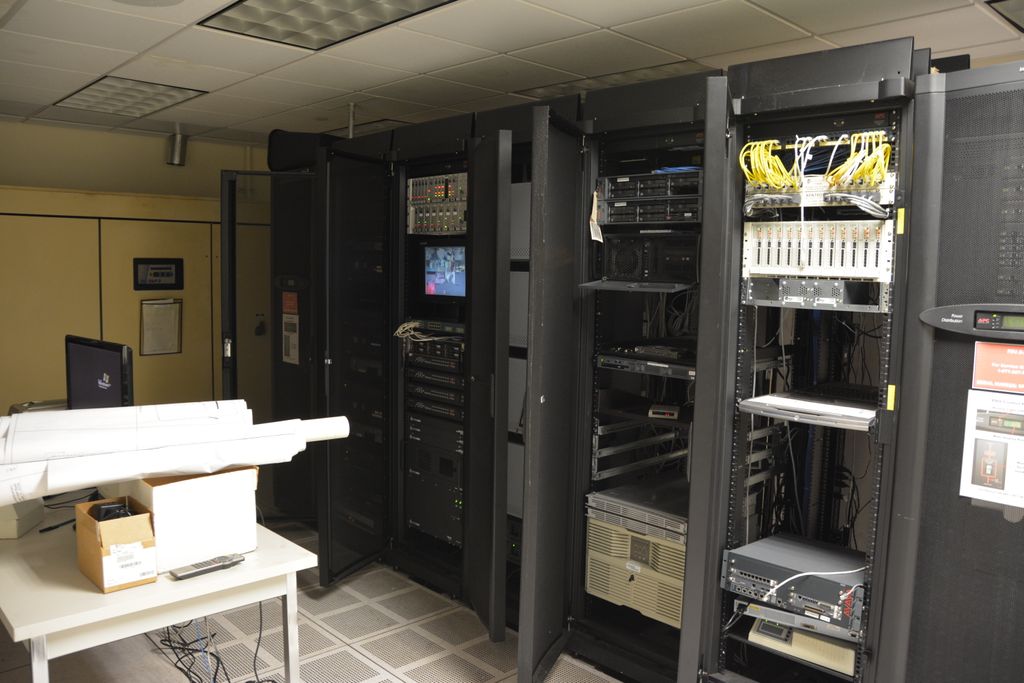Caching is a technique used in computer systems to improve performance and reduce server load. It involves storing frequently accessed data in a fast, local storage device, such as memory or a disk cache. While caching offers several benefits, such as improved performance, reduced server load, and faster response times, it also has some drawbacks, including the potential for stale data, increased complexity, and cache invalidation challenges. There are various caching strategies, including time-based expiration, key-based invalidation, and partial caching. Overall, caching can be a powerful tool for optimizing system performance, but it requires careful consideration and implementation.
Key Takeaways
- Caching improves performance by storing frequently accessed data in a fast storage device.
- It reduces server load by fulfilling requests from the cache instead of the original source.
- Faster response times are achieved by retrieving data from the cache instead of slower storage.
- Stale data can be a drawback of caching, as the cached data may not always be up to date.
- Caching adds complexity to the system, requiring careful management and cache invalidation strategies.
What is Caching?

Definition of Caching
A cache is a collection of temporarily stored data for quick access upon request. In computers, information is usually stored on a hard disk. When it is requested, a computer needs to run several processes before the information can be presented. Caching solves this issue by processing the frequently requested information and then storing it in temporary storage or memory. This allows computers to access the file quickly. The same caching concept can also be used by WordPress websites to improve performance and make your website load faster. You see, WordPress is a dynamic content management system. This means that each time a user visits your website, WordPress fetches information from the database and then runs several other steps before the web page is sent to the user’s browser. For WordPress websites, caching involves storing the processed web page in a cache so that subsequent requests for the same page can be served faster without repeating the entire process. By implementing caching, WordPress websites can significantly reduce the time it takes to load a page, resulting in improved performance and a better user experience.
How Caching Works
Caching solves the issue of slow website loading by processing frequently requested information and storing it in temporary storage or memory. This allows computers to quickly access the file without going through the whole page generation process every time. WordPress websites can also utilize caching to improve performance and make the website load faster. WordPress, being a dynamic content management system, fetches information from the database and runs several steps before the web page is sent to the user’s browser. Caching allows WordPress sites to skip many of these steps, resulting in faster loading times.
Benefits of Caching

Improved Performance
Caching plays a crucial role in improving the performance of a system. By storing frequently accessed data in a cache, it can be retrieved quickly when needed, reducing load times and making the system significantly faster. This results in a smoother user experience and increased customer satisfaction. Additionally, caching allows for more data to be sent and received at the same time, increasing the throughput of the system and enabling faster transmission of data. Overall, caching helps optimize system performance and enhance overall system efficiency.
Reduced Server Load
Caching can decrease your hosting server’s workload, which will save server memory and I/O operations. This is especially important for those whose businesses and organizations operate on limited, shared hosting plans. By caching frequently accessed data and storing it in temporary storage, the server can quickly retrieve and deliver the cached content to users, reducing the need for time-consuming database queries. This not only improves the speed and performance of your website but also helps to optimize server resources.
Additionally, reduced server load can have a positive impact on SEO rankings. The loading speed of your website is a key factor in how high your site ranks on popular search engines. With caching, the server can deliver content faster, resulting in improved user experience and potentially higher rankings in search engine results.
In summary, caching reduces server load by storing frequently accessed data, resulting in improved website performance and optimized server resources. This can be especially beneficial for businesses and organizations on shared hosting plans and can also contribute to better SEO rankings.
Faster Response Times
Faster response times are one of the key benefits of caching. By storing frequently accessed data closer to the user, caching reduces the time it takes to retrieve and deliver that data. This results in faster loading times for web pages and applications, improving the overall user experience. With faster response times, users can access the information they need more quickly, leading to increased satisfaction and engagement.
Drawbacks of Caching

Stale Data
Stale data refers to outdated or incorrect information that is stored in the cache and is not regularly updated. When the data stored in the cache is not updated, requests to the disk can return outdated or incorrect results. This can lead to inconsistent results and impact the overall system performance. Buffer caches can also increase processing time if the cached data is not used. If the data stored in the cache is not used, it will take extra time to go to the disk to access it. Additionally, buffer caches can lead to a decrease in overall system performance if the cache is too large. When the cache is too large, the system will have to use more memory to store the cached data, resulting in increased overhead when accessing the disk.
Increased Complexity
The use of buffer cache can increase the complexity of applications, making them more difficult to debug and maintain. Additionally, buffer cache can lead to resource contention if multiple applications are trying to access the same cached data. It can also be vulnerable to data corruption in the event of system crashes or power loss.
Furthermore, buffer caches can result in increased processing time if the cached data is not used. If the data stored in the cache is not utilized, it will take extra time to access it from the disk. Moreover, having a cache that is too large can decrease overall system performance as it requires more memory, leading to increased overhead when accessing the disk.
To mitigate these challenges, it is important to regularly update the data stored in the cache to avoid inconsistent results. Additionally, careful consideration should be given to the size of the cache to ensure optimal system performance.
Overall, while buffer cache can provide benefits such as improved system throughput and faster response times, it also introduces complexities and potential drawbacks that need to be carefully managed.
Cache Invalidation
Cache invalidation is an important aspect of caching that needs to be carefully considered. If the data stored in the cache is not updated regularly, requests to the disk can return outdated or incorrect results. This can lead to inconsistent results and impact the overall system performance. Buffer caches can also increase processing time if the cached data is not used. When the data stored in the cache is not used, it will take extra time to go to the disk to access it.
To mitigate these issues, there are several strategies that can be implemented:
- Enable server stale: By enabling server stale, you can specify which content types you want to exclude from the cache. This helps prevent outdated data from being served to users.
- ESI (Edge Side Includes): ESI allows you to separate specific parts of a website page into fragments and store them in a public or private cache. This allows for more granular control over caching and ensures that the pages are assembled correctly before being served to the browser.
- Regular cache updates: It is important to update the cache whenever new data is available. This ensures that the cached data remains up to date and accurate.
It is worth noting that buffer caches can also have some drawbacks. They can be memory-intensive, requiring a significant amount of memory to store the cached data. This can lead to resource contention if multiple applications are trying to access the same cached data. Additionally, buffer caches can increase the complexity of applications, making them more difficult to debug and maintain. Finally, buffer caches can be vulnerable to data corruption if the system crashes or power is lost.
Overall, cache invalidation is a critical aspect of caching that should be carefully managed to ensure optimal performance and accurate data retrieval.
Caching Strategies

Time-based Expiration
Caching strategies often include time-based expiration, where cached data is considered valid for a certain period of time before it is considered stale. This approach helps improve performance by reducing the need to fetch data from the original source frequently. However, it’s important to strike a balance between cache duration and data freshness. Setting a longer expiration time can result in serving outdated data, while setting a shorter expiration time may increase the load on the server due to frequent cache invalidation and data re-fetching.
To implement time-based expiration, developers can set a specific duration for cache validity based on the nature of the data and the expected rate of change. This can be achieved by configuring cache headers or using caching libraries that provide expiration mechanisms. It’s also common to include cache-control directives, such as max-age and s-maxage, to control the caching behavior and ensure timely expiration of cached data.
Here’s an example of how cache headers can be used to specify a time-based expiration:
| Cache-Control | max-age=3600 |
|---|---|
| Expires | [timestamp] |
In this example, the max-age directive indicates that the cached data is valid for 3600 seconds (1 hour) from the time it was initially cached. The Expires header provides an absolute timestamp indicating when the data should be considered stale and no longer used.
It’s worth noting that time-based expiration is suitable for data that doesn’t change frequently or doesn’t require real-time updates. For dynamic content or data that needs to be updated frequently, other caching strategies like key-based invalidation or partial caching may be more appropriate.
Key-based Invalidation
Key-based invalidation is a caching strategy that relies on using unique keys to identify and invalidate cached data. When a change is made to the underlying data, the corresponding cache entry is marked as invalid by changing its key. This ensures that the next time the data is requested, the cache will recognize that it is no longer valid and retrieve the updated data from the source.
Key-based invalidation offers several advantages. First, it allows for granular control over which specific data entries need to be invalidated, reducing the need to clear the entire cache. This can be particularly useful in scenarios where only a subset of the data is frequently updated. Second, it helps maintain data consistency by ensuring that the cached data always reflects the most recent changes. Finally, key-based invalidation is relatively simple to implement and can be easily integrated into existing caching systems.
However, there are also some considerations to keep in mind when using key-based invalidation. One potential drawback is the increased complexity of managing and tracking the keys associated with each cached entry. This can become challenging as the number of cached entries and the complexity of the data structure grows. Additionally, if the key generation process is not carefully designed, it can lead to collisions or inefficient cache lookups, impacting performance. It is important to carefully design the key generation algorithm to ensure uniqueness and efficiency.
Overall, key-based invalidation is a powerful caching strategy that offers granular control over cache invalidation and helps maintain data consistency. By carefully considering the design and implementation aspects, it can be an effective solution for managing cached data.
Partial Caching
Partial caching is a caching strategy that allows specific parts of a web page to be cached while leaving other parts dynamic. This can be useful when certain elements of a page, such as navigation menus or sidebars, remain consistent across multiple requests, while other content, like user-specific data or real-time updates, needs to be generated dynamically.
By selectively caching only the static elements, partial caching can significantly improve the performance of a website without sacrificing the dynamic functionality. It allows for faster response times and reduced server load, as the static elements can be served directly from the cache without the need for additional processing.
Implementing partial caching requires careful consideration of which parts of the page should be cached and which should remain dynamic. It also requires a mechanism for invalidating the cache when the dynamic content changes to ensure that users always see the most up-to-date information.
Overall, partial caching is a powerful caching strategy that strikes a balance between performance and dynamic functionality, making it a valuable tool for optimizing web applications.
Conclusion
In conclusion, caching has several advantages and disadvantages. On the positive side, caching can greatly improve data retrieval speed by reducing the need to access the disk. It also helps improve overall system performance by fulfilling multiple requests from the cache instead of the disk. Additionally, caching can reduce data redundancy and optimize network and database performance. However, there are also drawbacks to caching. If the cached data is not used, it can increase processing time. Large cache sizes can lead to decreased system performance and memory overhead. Inconsistent results may occur if the cached data is not regularly updated. Despite these disadvantages, caching remains a valuable tool for enhancing system performance and optimizing data access.
Frequently Asked Questions
What is caching?
Caching is a technique used to store frequently accessed data in a fast, local storage device, such as memory or disk, to improve performance and reduce the need to access the original source of the data.
How does caching work?
Caching works by storing a copy of the data in a cache, which is a temporary storage location. When a request is made for the data, the cache is checked first. If the data is found in the cache, it is returned, avoiding the need to access the original source. If the data is not found in the cache, it is retrieved from the original source and stored in the cache for future use.
What are the benefits of caching?
Caching offers several benefits, including improved performance, reduced server load, and faster response times. By storing frequently accessed data in a cache, it can be retrieved much faster than if it had to be accessed from the original source. This leads to faster load times and better overall performance. Caching also reduces the load on servers by serving data from the cache instead of generating it dynamically. This can help improve scalability and handle higher traffic volumes. Additionally, caching can result in faster response times for users, improving their experience.
What are the drawbacks of caching?
While caching offers many benefits, there are also some drawbacks to consider. Stale data is one potential issue with caching. If the data in the cache becomes outdated or invalid, it can lead to incorrect results. Cache invalidation is another challenge, as it can be difficult to determine when to update or remove data from the cache. Additionally, caching adds complexity to the system, as it requires additional components and mechanisms to manage and maintain the cache.
What are some caching strategies?
There are several caching strategies that can be used, depending on the specific requirements of the system. Time-based expiration is a common strategy, where data in the cache is considered valid for a certain period of time before it is considered stale and needs to be refreshed. Key-based invalidation is another strategy, where data in the cache is associated with a unique key, and when that data is updated or deleted, the corresponding cache entry is invalidated. Partial caching is another approach, where only certain parts of a larger data set are cached, based on specific criteria.
What are the advantages and disadvantages of buffer cache?
Advantages of buffer cache include improved data retrieval speed, reduced disk reads, and reduced data redundancy. By caching frequently used data in memory, it can be accessed much faster than if it was on the disk. This leads to improved performance and reduced disk reads. Buffer cache also helps reduce data redundancy by serving multiple requests from the same piece of data in the cache. Disadvantages of buffer cache include increased processing time if the cached data is not used, increased complexity, and the need for cache invalidation to ensure data consistency.




